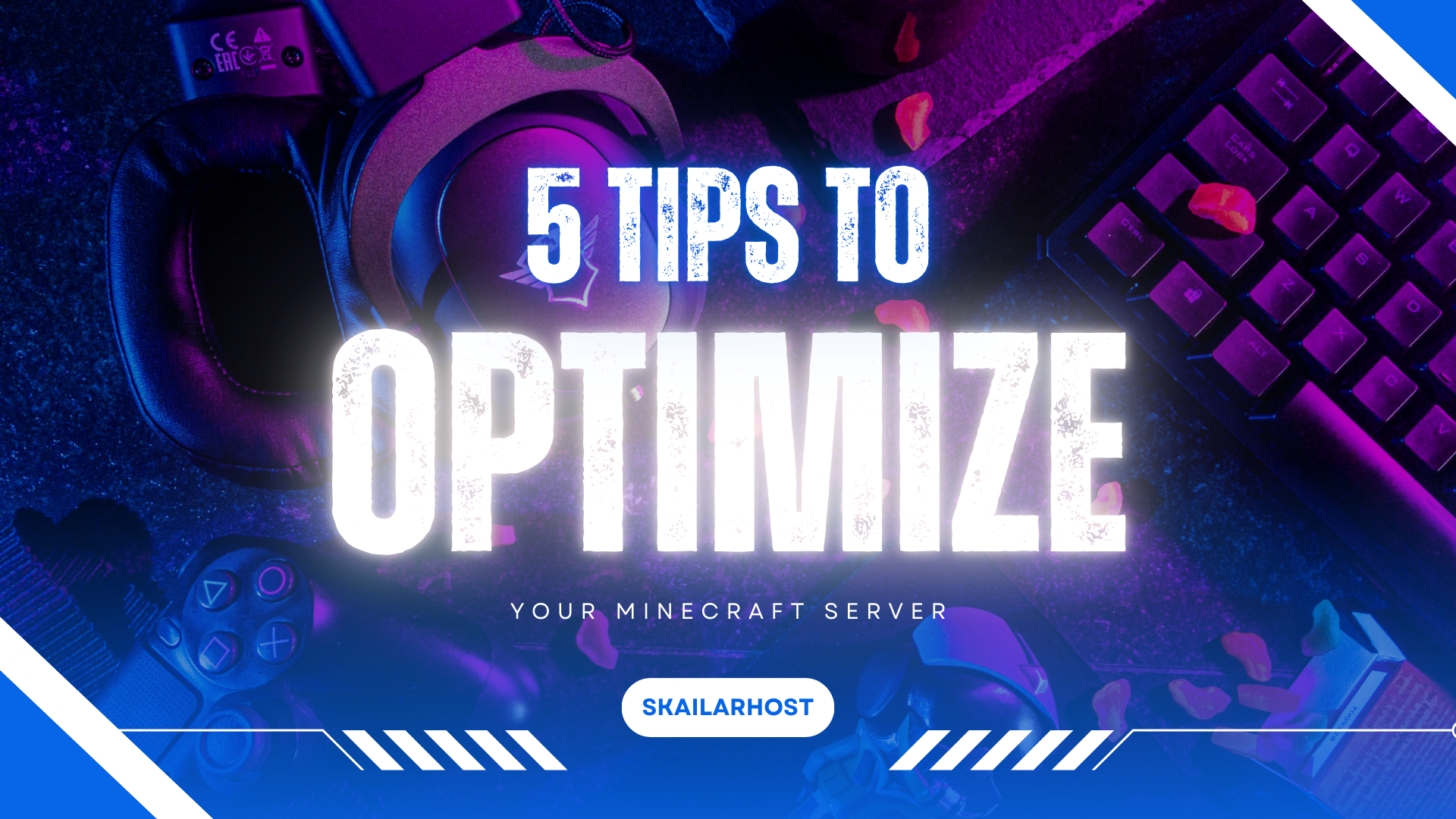5 Tips to Reduce Lag on Your Minecraft Server

Lag ruins survival, PvP, and minigames. The good news: most Minecraft performance issues have simple fixes. In this guide we’ll cover five proven ways to reduce Minecraft server lag, improve TPS, and deliver low latency gameplay for your community.
TL;DR
Use PaperMC/Purpur, right-size RAM, trim heavy plugins, lower view-distance/simulation-distance, control entities, and host near your players on optimized Minecraft hosting with DDoS protection and NVMe.
1) Choose Performance Server Software (Paper/Purpur)
Vanilla and even Spigot can struggle at scale. Switch to PaperMC or Purpur for significant tick and entity handling improvements. For high-concurrency experiments, you can test Folia, but Paper or Purpur are the safest wins for most servers.
- Better chunk loading and entity AI scheduling
- Async tasks and config-level performance switches
- Large plugin ecosystem and active updates
2) Allocate RAM Correctly (and Keep JVM Healthy)
Too little RAM causes stutters, too much can trigger long garbage collection pauses. As a rule of thumb:
- Vanilla/Small servers (5–10 players): 2–3 GB
- Light plugins (10–30 players): 4–6 GB
- Modded/Heavy plugins: 8+ GB
Always leave memory for the OS and panel. On SkailarHost, plans are tuned for Minecraft so you get the right balance of CPU single-core speed and NVMe I/O. Need help sizing? See features or jump directly to Minecraft plans.
3) Trim Heavy Plugins & Use Performance Alternatives
Each plugin hooks events and can add CPU overhead. Audit your stack:
- Remove unused/overlapping plugins (especially anticheat & chat suites)
- Prefer well-maintained, performance-first plugins
- Benchmark on a staging instance before going live
Consider replacing resource hogs with lighter options, and keep everything up to date. Need a safe place to test? Spin up a second instance on SkailarHost Minecraft Hosting and clone your world.
4) Tune View Distance, Simulation Distance & Entities
High distances multiply chunks and AI work per tick. Lower them to stabilize TPS while keeping gameplay smooth:
- Survival SMP: view-distance 8–10, simulation-distance 6–8
- Minigames/PvP: view-distance 6–8
- Cap mobs, item stacks, and farms with ClearLag-style tools
Quick config example in server.properties:
view-distance=8 simulation-distance=6 max-tick-time=60000 sync-chunk-writes=false
On Paper/Purpur, also review paper.yml and purpur.ymlfor entity activation ranges, hopper optimizations, and farm behavior tweaks.
5) Host Near Your Players (Low Latency Network)
Even a perfectly tuned server lags with high ping. Choose a node close to your players with strong peering and DDoS protection. If your audience is in Europe, pick an EU location; same for NA.
SkailarHost offers modern data centers with low-latency networking, NVMe storage, and always-on DDoS mitigation. See our features or start a server in minutes on Minecraft Hosting.
💡 Pro Tip
Schedule restarts during off-hours, rotate logs, and keep regular backups. You can automate backups and one-click restores from the SkailarHost panel.
Extra Wins: Region, Mods & Monitoring
- Pick the closest region during checkout on Minecraft Hosting.
- Prefer lightweight mod packs; avoid massive client-side shaders on low-end players.
- Monitor TPS and timings (
/timingson Paper) to track problem plugins or farms.
Conclusion
Reducing lag comes down to the right software, smart config, and low-latency infrastructure. Switch to Paper/Purpur, size RAM properly, trim plugins, tune distances/entities, and host near your players. If you’re ready for smooth gameplay and happier players, try SkailarHost Minecraft Hosting — optimized hardware, NVMe storage, and real 24/7 support included.
